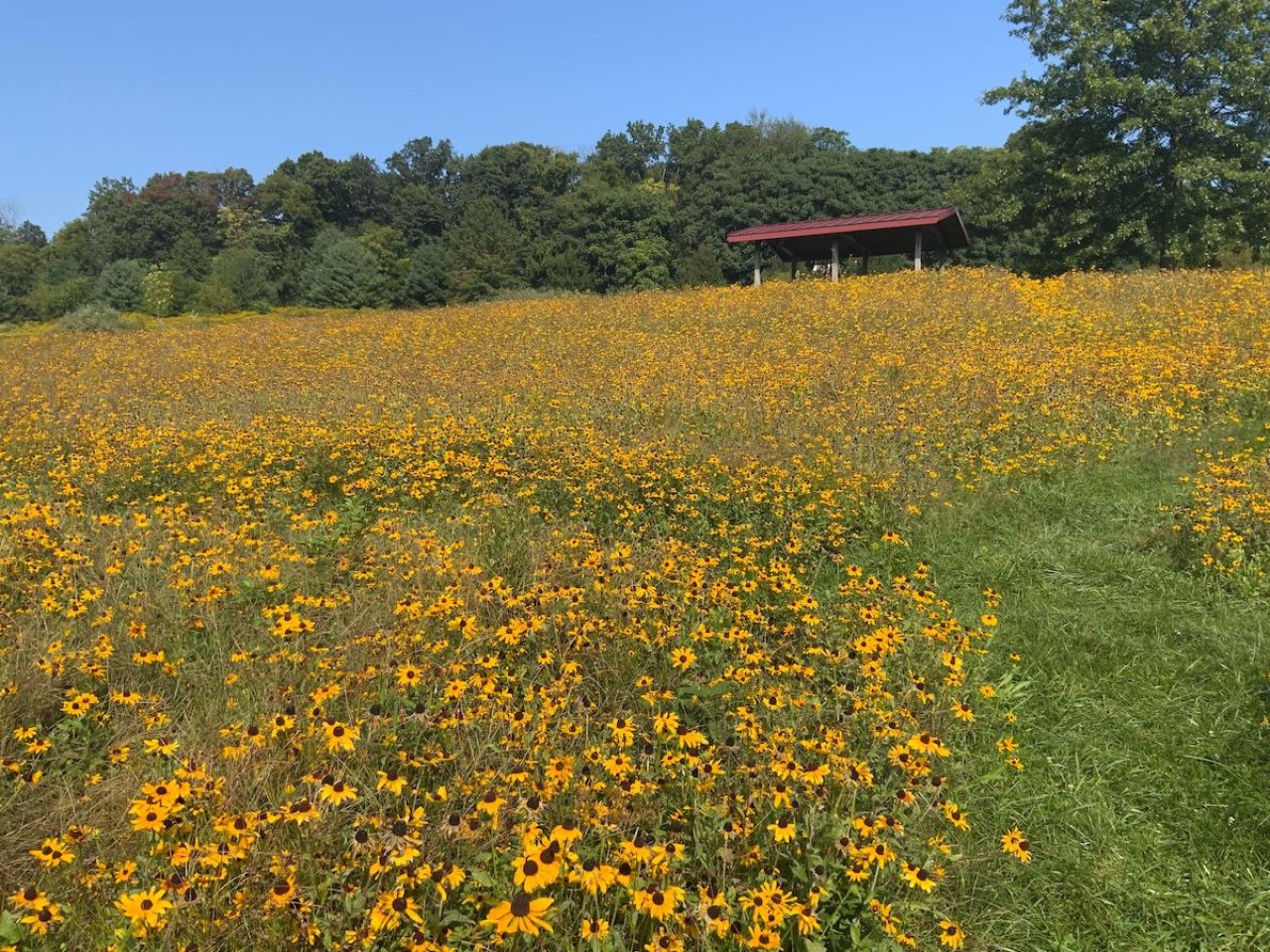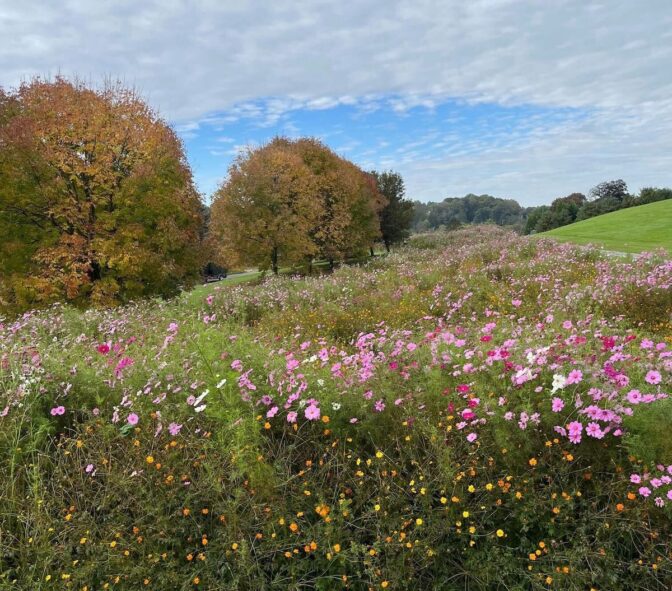
Meadows can improve water quality, prevent flooding and provide habitat for pollinators. Shown here is meadow at a public park in West Bradford Township. (Courtesy of Weeds Inc)

Meadows can improve water quality, prevent flooding and provide habitat for pollinators. Shown here is meadow at a public park in West Bradford Township. (Courtesy of Weeds Inc)

Meadows can improve water quality, prevent flooding and provide habitat for pollinators. Shown here is meadow at a public park in West Bradford Township. (Courtesy of Weeds Inc)
For years, perfectly manicured lawns have been a symbol of the American landscape.
But environmental scientists say turf landscapes can contribute to runoff pollution, and reduce the natural habitat for pollinators and birds.
So, the Pennsylvania Department of Conservation and Natural Resources is offering funds for residents and businesses who want to convert their lawns to meadows. These peaceful habitats with native grasses and wildflowers have a number of environmental benefits.
“Lawn conversion intends to improve water quality, air quality, provide habitat to support wildlife and pollinators, and it also sequesters carbon,” said Kelsey Mummert, the program’s coordinator.

The Twin Oaks community in Chester Springs received funding to convert its lawn to a meadow. (Courtesy of Jim Freed)
The initiative began in 2020, but interest from residents, businesses and nonprofits has increased this year, Mummert said. Lawn owners can contact the department for lawn conversion resources, or seek funding to pay for the landscape work. Out-of-pocket costs for lawn conversions can range between $2,000 and $5,000 an acre, according to landscapers.
The Twin Hills development in Chester Springs received financial assistance through the program this year, and residents already are witnessing the meadow’s benefits.
“You can hear the bees, and can see the bees and the butterflies — and the beauty that it has created on the edge of the property is just phenomenal,” said Jim Freed, who is on the board of directors for the community.
Mummert said the program significantly benefits highly developed areas, which are prone to stormwater runoff pollution and flooding. Unlike turf grass, which has shallow root systems, meadow grasses have larger root systems, which help soak up water.
“Where I live, there’s a whole lot of lawn, and during heavy rain events you can just watch the water running off in sheets towards the road,” Mummert said. “So these native plants are facilitating that water soaking into the ground and reducing the flooding events.”
Lawn conversions also help landowners save money, because meadows don’t have to be mowed as frequently, she added.
It can take three to four growing seasons for a meadow to reach maturity, said Drew O’Neill, vice president of Weeds, Inc., which partners with the state to complete the conversions.
He said bloom times for meadow flowers vary over the course of the season, offering a natural kaleidoscope for those who enjoy them.
“You’ll get an actively growing meadow from roughly April through the end of October, giving you different views, textures and colors,” O’Neill said.
There are two million acres of lawn in Pennsylvania. O’Neill said the more acres that are converted, the greater the environmental benefits will be, but added that no lawn is too small to convert.

Sometimes, your mornings are just too busy to catch the news beyond a headline or two. Don’t worry. The Morning Agenda has got your back. Each weekday morning, host Tim Lambert will keep you informed, amused, enlightened and up-to-date on what’s happening in central Pennsylvania and the rest of this great commonwealth.
The days of journalism’s one-way street of simply producing stories for the public have long been over. Now, it’s time to find better ways to interact with you and ensure we meet your high standards of what a credible media organization should be.